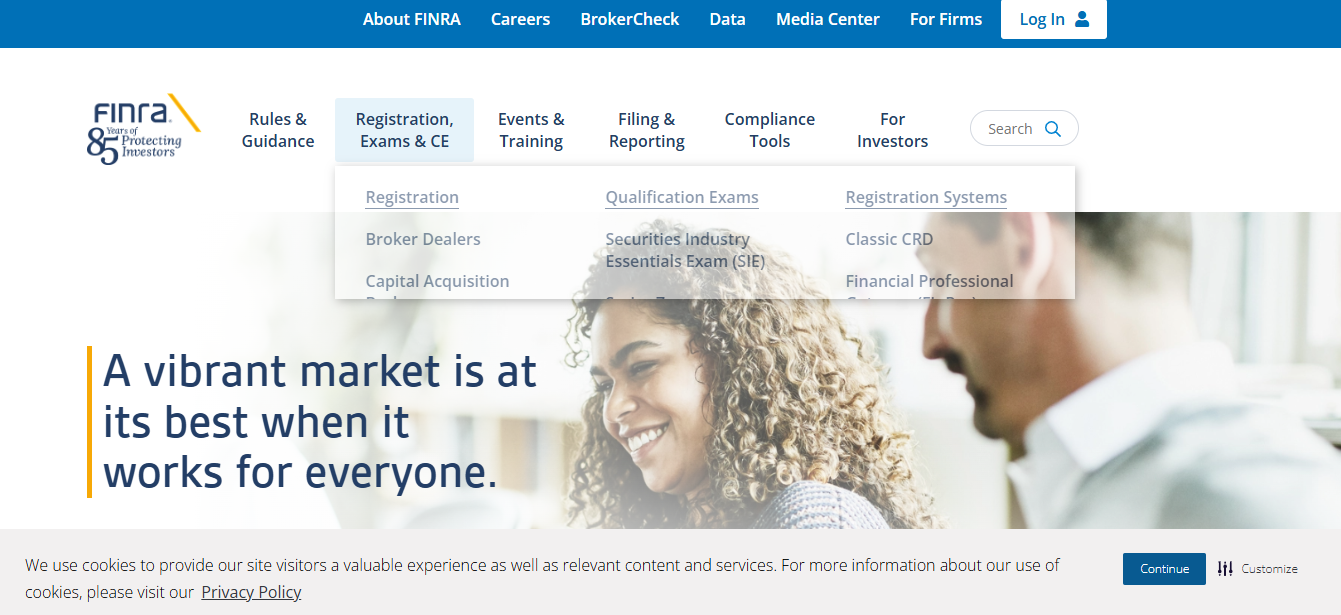- This topic has 0 replies, 1 voice, and was last updated 1 year ago by .
Investment Scams
Reported On November 13, 2024 at 12:17 pm
Trust Exploited: How a Fake FINRA Website is Scamming Crypto Investors
 The digital world has seen a surge in scams posing as reputable financial institutions to lure unsuspecting investors, with one of the latest schemes involving a fraudulent operation that impersonates the reputable FINRA.org. Scammers exploiting the name of the Financial Industry Regulatory Authority (FINRA) have taken advantage of investor trust, presenting a seemingly legitimate cryptocurrency investment opportunity with false promises of high returns. This article explores the tactics used in this elaborate scheme and provides crucial information for protecting oneself from similar scams.
The digital world has seen a surge in scams posing as reputable financial institutions to lure unsuspecting investors, with one of the latest schemes involving a fraudulent operation that impersonates the reputable FINRA.org. Scammers exploiting the name of the Financial Industry Regulatory Authority (FINRA) have taken advantage of investor trust, presenting a seemingly legitimate cryptocurrency investment opportunity with false promises of high returns. This article explores the tactics used in this elaborate scheme and provides crucial information for protecting oneself from similar scams.
- Tactics of the Scam: A Closer Look
Scammers behind this scheme have adopted an advanced and multi-layered approach to deceive investors. Here’s how the fraudulent platform exploits trust and induces investors to make high-value transactions: - Misleading Associations with Established Financial Institutions: The fraudulent site uses FINRA’s reputable name and logo to create a false sense of security. FINRA, a genuine organization dedicated to regulating broker-dealer firms in the United States, has no connection to any cryptocurrency investment schemes. The scammers’ reliance on FINRA’s branding to back their claims of legitimacy is designed to reassure investors who are familiar with FINRA’s regulatory role in finance.
False Promises of High Returns: The platform entices investors with promises of exceptionally high returns, claiming that their investments are safe and regulated. This tactic is common among crypto scams, as the lure of fast and substantial profits tends to cloud judgment and attract a broad range of investors.
Professional-Looking Website Interface and Active Social Media Ads: To build credibility, the website has a clean, professional design and heavily leverages social media advertisements. These ads are carefully crafted, often targeting specific demographics interested in cryptocurrency and investment, and driving them directly to the fake site. - Redirecting Communication to Telegram: The platform uses Telegram for customer support, directing users to interact via private channels instead of providing legitimate contact information like an official email or phone number. This setup minimizes transparency, allowing scammers to manage communications selectively and avoid detection.
- Blocked Withdrawals and Demands for Additional Funds: When users attempt to withdraw their earnings, they are denied access. Instead, the scammers inform users that withdrawals are restricted unless they either bring in new investors or deposit additional funds. This manipulative strategy ensures that the scammers continue receiving funds while delaying or outright denying payout requests.
- Transaction Evidence of Fraudulent Activity
The suspicious receiving address, bc1qdv4zpss0c0c868pwp8rOnvuds5vxwaOvtha2wm, has documented activity that aligns with typical scam patterns. Transaction records indicate that significant sums, including 0.00827652 BTC and 2.28634 BTC, have been transferred to this address, showing a rapid series of incoming deposits and quick withdrawal patterns. Such behavior is a red flag, as legitimate investment platforms generally follow standard practices that ensure traceable, secure transactions. The continuous movement of funds also complicates recovery efforts, with funds often being transferred across multiple wallets to avoid detection. - Domain Analysis and Red Flags
Examining the fraudulent domain further reveals additional warning signs: - Recent Domain Registration and Minimal Online Authority: The domain associated with this scheme was registered recently, a trait often found with scam sites designed for short-term exploitation. Scam sites are usually active for limited periods, targeting as many victims as possible before disappearing.
- Lack of Organic Search Presence and Minimal Backlinks: A quick search reveals that the site has no substantial organic search traffic or significant backlinks from reputable sources, suggesting that it lacks credibility within the online community. Scammers rarely invest in building authentic search visibility because they intend to shut down operations before detection.
- Hosting with Infrastructure Providers Known for Privacy Shielding: The site utilizes hosting services known for masking actual server locations, making it difficult to trace its origins. Such infrastructure providers are often used by malicious actors to conceal their true identities, allowing them to evade law enforcement and regulatory authorities.
- Protecting Yourself from Cryptocurrency Scams
To prevent falling victim to similar scams, keep the following safety measures in mind: - Verify Credentials Carefully: Always check a platform’s affiliations and credentials. Cross-check regulatory claims with official financial bodies to confirm any connection with legitimate institutions.
- Be Skeptical of High-Return Promises: Cryptocurrency investments can be lucrative but are also inherently volatile. If a platform guarantees extremely high returns with little to no risk, it’s likely a scam.
- Avoid Platforms that Lack Direct Contact Information: Legitimate platforms provide multiple communication channels, including email addresses and phone numbers. If a website redirects all communication to social media platforms like Telegram, proceed with caution.
- Conduct Domain Research: Investigate the platform’s domain history. Newly registered sites lacking online credibility and authority are often red flags of scam operations.
Engage Only with Established, Regulated Platforms: Stick to well-known, regulated exchanges for cryptocurrency trading and investment, especially if you’re new to crypto investments.
- You must be logged in to reply to this topic.